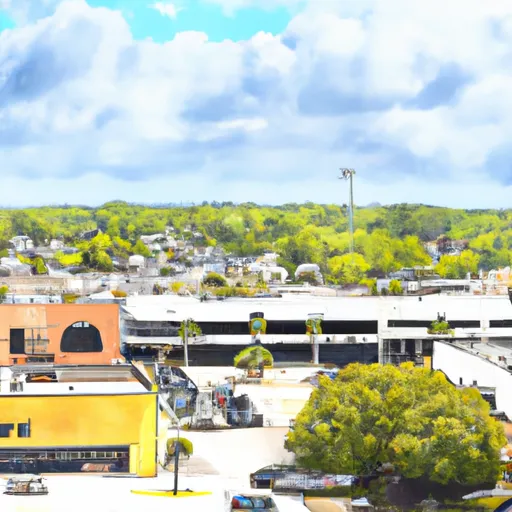-
 Snoflo Premium
Snoflo Premium
Get unlimited access to all our content
With no Ad interruptions! - Start Your Free Trial Login with existing account
Princeton
Eden Index
Climate
5.4
•
Recreation
6.3
•
Community
2.0
•
Safeguard
4.9/10

Princeton, Florida is a small suburban community located in Miami-Dade County. The climate in Princeton is considered tropical, characterized by hot and humid summers with frequent afternoon thunderstorms, and mild winters with little to no snowfall. Average temperatures range from the high 70s to low 90s Fahrenheit (25-35 degrees Celsius) during the summer and mid-50s to mid-70s Fahrenheit (10-25 degrees Celsius) during the winter.
Hydrologically, Princeton is situated in close proximity to the Biscayne Bay, making it part of the greater Everglades ecosystem. The region is characterized by freshwater wetlands, canals, and marshes, providing a habitat for various flora and fauna.
Outdoor recreation opportunities in Princeton are abundant. The nearby Biscayne National Park offers activities such as boating, fishing, snorkeling, and scuba diving, allowing visitors to explore the beautiful coral reefs and marine life in the area. Additionally, the Everglades National Park, just a short drive away, provides opportunities for hiking, camping, birdwatching, and airboat tours, allowing visitors to experience the unique ecosystem of the Everglades.
Overall, Princeton, Florida offers a tropical climate, diverse hydrology constituents, and a range of outdoor recreation opportunities for residents and visitors to enjoy.
What is the Eden Index?
The Snoflo Eden Index serves as a comprehensive rating system for regions, evaluating their desirability through a holistic assessment of climate health, outdoor recreation opportunities, and natural disaster risk, acknowledging the profound impact of these factors on livability and well-being.
Climate Health Indicator (CHI): 5.4
Princeton receives approximately
1581mm of rain per year,
with humidity levels near 82%
and air temperatures averaging around
24°C.
Princeton has a plant hardyness factor of
10, meaning
plants and agriculture in this region tend to thrive here all year round.
By considering the ideal temperature range, reliable water supplies, clean air, and stable seasonal rain or snowpacks, the Climate Health Indicator (CHI) underscores the significance of a healthy climate as the foundation for quality living.
A healthy climate is paramount for ensuring a high quality of life and livability in a region, fostering both physical well-being and environmental harmony. This can be characterized by ideal temperatures, reliable access to water supplies, clean air, and consistent seasonal rain or snowpacks.
Weather Forecast
Streamflow Conditions
Southern Florida
Area Rivers
Southern Florida
Snowpack Depths
Southern Florida
Reservoir Storage Capacity
Southern Florida
Groundwater Levels
Recreational Opportunity Index (ROI): 6.3
The Recreational Opportunity Index (ROI) recognizes the value of outdoor recreational options, such as parks, hiking trails, camping sites, and fishing spots, while acknowledging that climate plays a pivotal role in ensuring the comfort and consistency of these experiences.
Access to outdoor recreational opportunities, encompassing activities such as parks, hiking, camping, and fishing, is crucial for overall well-being, and the climate plays a pivotal role in enabling and enhancing these experiences, ensuring that individuals can engage in nature-based activities comfortably and consistently.
Camping Areas
| Campground | Campsites | Reservations | Toilets | Showers | Elevation |
|---|---|---|---|---|---|
| John Pennekamp - Coral Reef State Park | None | 11 ft | |||
| CB Smith Park | None | 6 ft | |||
| Markham Park | 86 | 10 ft | |||
| Larry and Penny Thompson Park | None | -1 ft |
Catastrophe Safeguard Index (CSI):
The Catastrophe Safeguard Index (CSI) recognizes that natural disaster risk, encompassing floods, fires, hurricanes, and tornadoes, can drastically affect safety and the overall appeal of an area.
The level of natural disaster risk in a region significantly affects safety and the overall livability, with climate change amplifying these risks by potentially increasing the frequency and intensity of events like floods, fires, hurricanes, and tornadoes, thereby posing substantial challenges to community resilience and well-being.
Community Resilience Indicator (CRI): 2.0
The Community Resilience Indicator (CRI) recognizes that education, healthcare, and socioeconomics are crucial to the well-being of a region. The CRI acknowledges the profound impact of these elements on residents' overall quality of life. By evaluating educational resources, healthcare accessibility, and economic inclusivity, the index captures the essential aspects that contribute to a thriving community, fostering resident satisfaction, equity, and social cohesion.

